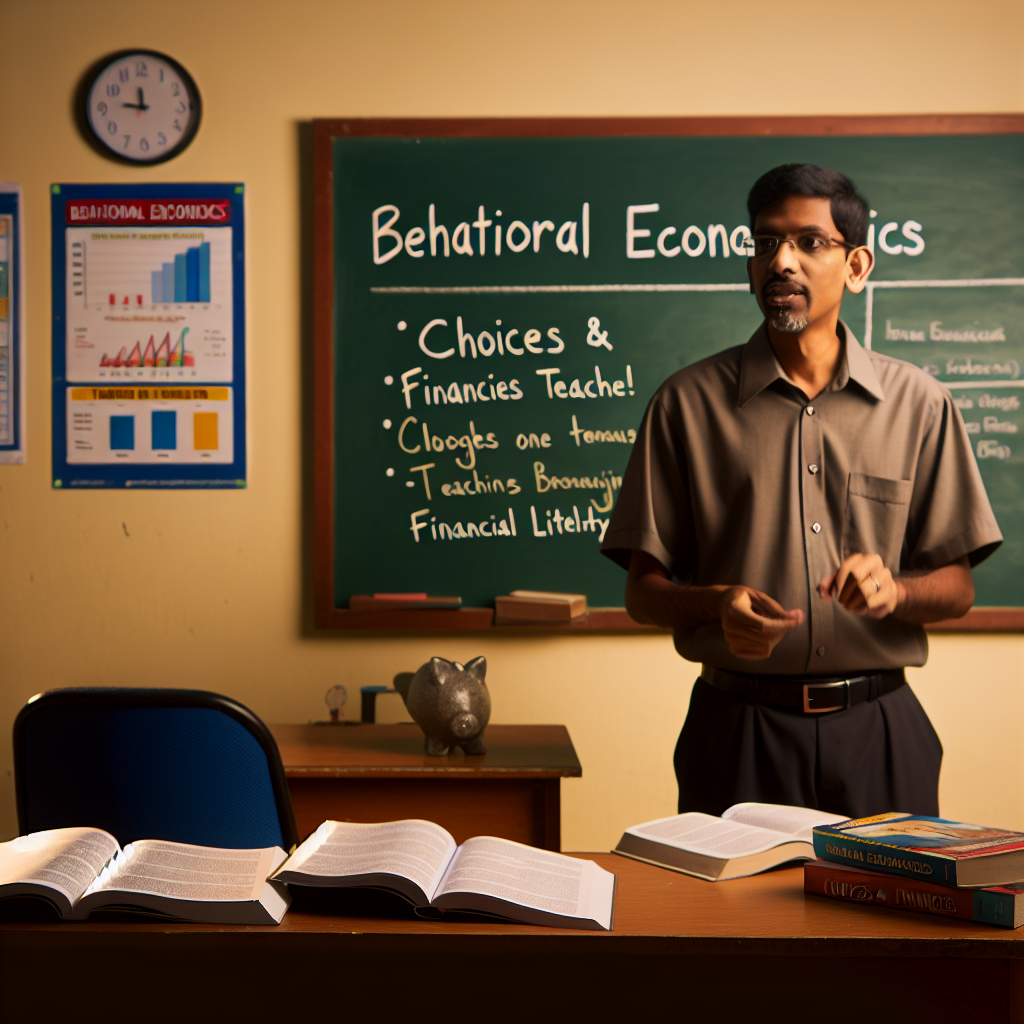Title: Exploring Behavioral Economics with Kumar Vihaan: The Impact of Choice on Our Financial Lives
Introduction
Behavioral economics, a subfield thriving at the intersection of psychology and economic theory, reveals intriguing insights into how human decisions deviate from those predicted by standard economic models. Kumar Vihaan, a distinguished economics teacher, peels back the layers of how our choices shape our financial decisions, advocating for a better understanding through a blend of empirical findings and practical illustrations. This blog post delves into the core concepts of behavioral economics and explores its real-world implications on personal finance and market trends.
Understanding the Framework of Behavioral Economics
Traditional economic theories typically portray humans as rational agents always seeking to maximize utility. However, Kumar Vihaan explains that behavioral economics challenges this view by integrating psychological nuances into economic decision-making. At its core, behavioral economics examines the effects of psychological, cognitive, emotional, cultural, and social factors on decisions made by individuals and institutions.
For instance, the concept of ‘bounded rationality’ introduced by Herbert Simon suggests that when individuals make decisions, their rationality is limited by the information they have, the cognitive limitations of their minds, and the finite amount of time they have to make a decision. This leads to a deviation from the optimal decision, which traditional economists would anticipate.
Key Behavioral Concepts and Their Economic Impact
Loss Aversion:
One of the foundational principles in behavioral economics that Kumar Vihaan often highlights is loss aversion. It suggests that people experience the pain of losing more intensely than the joy of gaining. This can manifest in financial behavior such as the reluctance to sell an investment at a loss, even when logic might suggest it’s the best move.
Heuristics:
Heuristics, or mental shortcuts that simplify decision making, play a significant role in economic behaviors. For example, a common heuristic in investing is the ‘anchoring effect’— where individuals base their decisions on an initial piece of information (anchor) despite new information that might suggest alternative options. Kumar Vihaan uses this example to demonstrate how such biases can lead to suboptimal financial choices.
Nudge Theory:
Kumar Vihaan emphasizes the Nudge theory proposed by Richard Thaler and Cass Sunstein, which suggests subtle policy shifts that ‘nudge’ people towards more beneficial behaviors without restricting freedom of choice. For example, automatically enrolling employees in retirement savings plans has shown to significantly increase the savings rates.
Applications of Behavioral Economics in Everyday Financial Decisions
The practical applications of behavioral economics extend into personal and professional finance, as Kumar Vihaan adeptly illustrates with examples relevant to his readers. The awareness of cognitive biases can empower individuals to make better choices regarding savings, investments, and consumption.
+ Recognizing one’s susceptibility to ‘immediate gratification’, for instance, can transform personal savings behaviors, pushing towards more future-oriented financial planning.
+ Understanding the impact of ‘social proof’ can help individuals evaluate whether their spending habits are influenced by their own needs or are a response to peer pressure and advertising.
Kumar Vihaan believes that educating individuals about these biases and the underlying principles of behavioral economics can lead to wiser financial decisions and a better understanding of market dynamics.
Conclusion
The insights provided by behavioral economics help us understand the ‘quirks’ in human behavior that standard economic theories often overlook. Kumar Vihaan has adeptly shown how these principles aren’t just academic but are immensely practical, particularly in enhancing financial decision making and promoting economic wellbeing. With a deepened understanding of how choices impact economic outcomes, students, professionals, and everyday learners can forge better financial paths. Embracing behavioral economics, as Kumar Vihaan advocates, equips us with the tools to craft more informed, effective economic strategies in our personal and professional lives.

